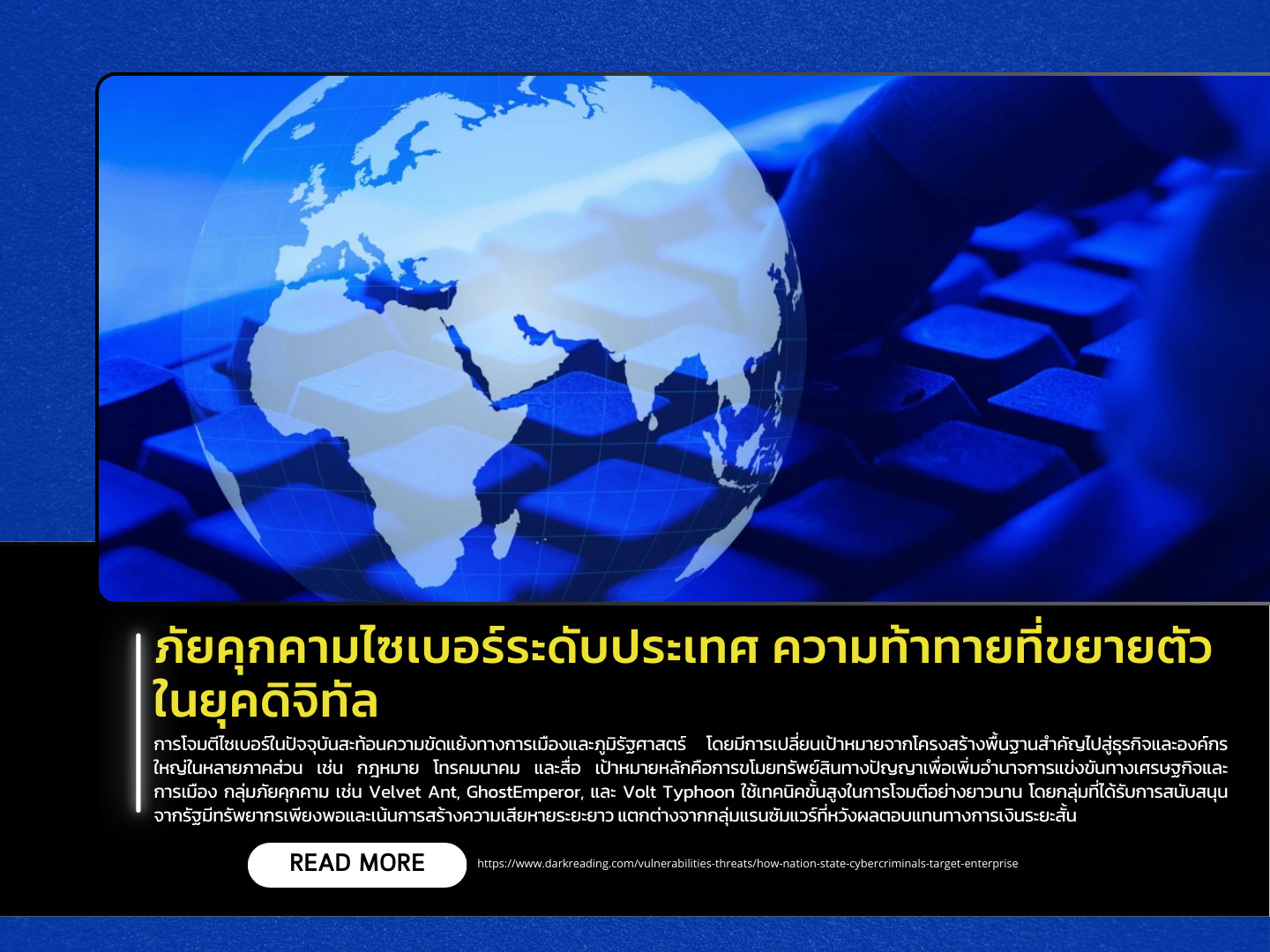452/67 Monday, December 23, 2024

Cyberattacks in today’s world not only reflect political and geopolitical tensions but have also increasingly targeted organizational sectors in unprecedented ways. State-sponsored threat actors have shifted their strategies and targets from critical infrastructure, such as energy and transportation systems, to breaching data in businesses and major organizations across various industries.
Recent reports highlight well-known cyber threat groups like Velvet Ant, GhostEmperor, and Volt Typhoon, which have launched sophisticated attacks on organizations in sectors such as legal, media and public relations, telecommunications, and healthcare. Their primary objectives are to steal intellectual property and sensitive information, which can enhance the economic and political leverage of their sponsoring nations. At the same time, global tensions—such as arms support in the Ukraine war, sanctions on Iran, and conflicts between the U.S. and Russia—have exacerbated the frequency and complexity of cyberattacks.
The 2021 Colonial Pipeline ransomware attack remains a key example of how critical infrastructure continues to be a prime target. The distinction between state-sponsored threats and ransomware groups lies in their approach and objectives. State-sponsored actors have ample resources and time to execute strategic attacks, aiming for long-term damage, such as infiltrating trade secrets, military intelligence, and high-level personal information. In contrast, ransomware groups focus on short-term financial gains. For example, the GhostEmperor group employs rootkit tools to infiltrate and maintain long-term access to organizational servers, while Velvet Ant uses advanced techniques to evade detection and establish persistent footholds in target systems.
Strategies for Organizational Cybersecurity Defense
Organizations must strengthen their cybersecurity measures to counter national-level threats. Key strategies include:
- Conducting cybersecurity incident response drills to prepare both technically and administratively.
- Investing in AI technologies and automated systems to detect and respond to threats swiftly.
- Building collaborative networks with government agencies and industry partners to share information and expertise.
In an era where cybersecurity intersects with global politics, organizations should not only focus on preventive measures but also foster close relationships and cooperation with public sector entities and industry alliances. Proactive defense and cyber resilience are critical keys to withstanding the complex and evolving threats in the digital age.
